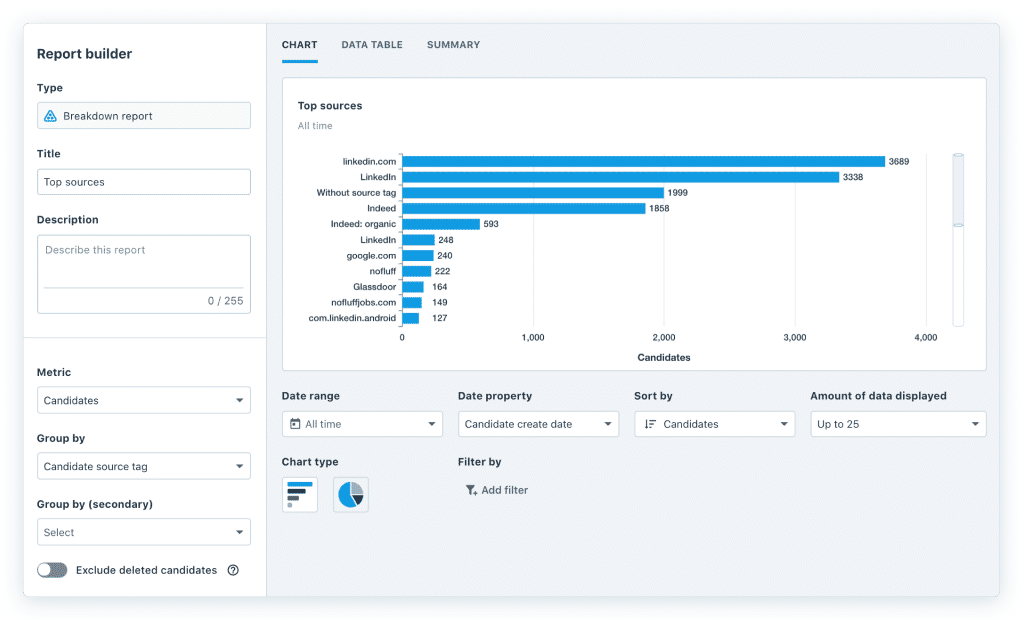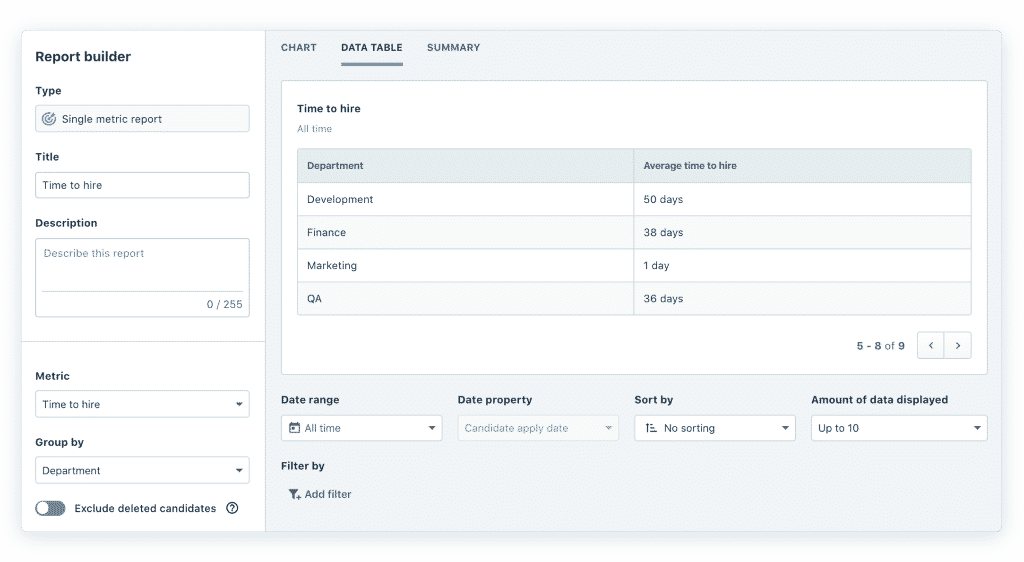Dominik Grzegorzewski, Talent Acquisition Specialist at Recruitee, shares how Recruitee uses recruitment analytics to make the right talent decisions at the right time and pace:
Data is a pillar of support for anyone responsible for bringing in talent. And when you’re hiring in uncertain times, that’s even more true.
Like every data-driven talent team out there, we at Recruitee rely on recruitment analytics to keep us laser-focused on our goals and monitor our hiring health. As our company keeps growing, it’s necessary to be confident in our decisions.
Working inside Recruitee means we have an analytics hub embedded in our applicant tracking software—visible and accessible to everyone on the team.
Recruitment analytics dashboards and reports track our most critical metrics in real-time and give us a customized view of our hiring performance. It allows us to discover what’s working, set timelines for new projects and flag bottlenecks in our hiring process.
What we measure
Here are three essential recruitment metrics we use at Recruitee. Next, I’ll share what they tell us about our performance.
1. Candidate sources
It’s important to know where the talent in your pipeline comes from. This metric tells you the number of candidates you get from specific sources, like job boards.
We use job tracking links for each source we want to track. Over time, this helps us to double down on the sources which lead to successful hires and abandon less fruitful sources.

2. Candidate experience
Candidates should be treated like clients. Not every candidate that goes through the different stages of your process will join your company, but most of them will have something to say about their experience. While there is only one successful hire, we care about the experience of every candidate.
Feedback surveys help us measure how effective we are at creating a positive experience for our candidates. We include questions like “How would you rate the recruiter’s responsiveness?” and “How would you rate the overall length of the hiring process?”.
We also add a comment box so that candidates can give us qualitative feedback. This brings things to our attention that we might not have been aware of and allows us to shape the recruitment experience.
Want to know the 7 tips on how to improve the candidate experience?
3. Time to hire
Time to hire tells you how long it takes on average to hire a candidate across all jobs once they’ve applied. While it’s a big-picture metric, you can slice and dice this number to get to the average time to hire for every department and role.

Great candidates are never on the market for long. Plus, if a process takes too much time, it can create a bad candidate experience.
Insights that keep us moving
Recruitment analytics get us closer to predicting future outcomes and help keep us on track to bring people on board faster.
Smarter sourcing
To get the most out of our candidate sources reports, we apply a location filter to look for any discrepancies in the data.
Recruitee has offices in Poland, the Netherlands, U.S and—since this year—Germany. Our Product Development team is in Poland, where sourcing from IT communities and dedicated job boards have proven to be the most effective. When hiring for our Amsterdam office, it helps to have a strong social media presence.
Our reports also show that no matter where we hire from, employee referrals and smart direct search bring promising results.
Time-saving moves
Time-based metrics provide a clue to what gear we’re in as a team.
Our average time to hire tells us something about our ability to spot top-notch talent as soon as they enter our database. We use it to boost our efficiency and ensure we stay consistent.
When we filter our time to hire (source, location, etc.), we can get answers to questions like, “Does the process take longer in Amsterdam than in Poland?” and “Do referrals spend an equal amount of time in the process as candidates who applied via our careers site?”

The more collaborative our workflow, the faster we move candidates forward. We aim to get candidates from one stage to the next within 4-5 working days so it feels like the process is happening “live”.
Of course, things won’t go as smoothly if candidates are stuck in a pipeline stage for too long. Drilling down to where it takes longer helps us to be clear about the challenges and go over it as a team.
We use retrospective meetings with hiring managers to give actionable feedback.
Better candidate experience
It’s no secret that companies create a much nicer experience for candidates when they don’t waste their time. We do our best to respond within 3 working days after a candidate has applied.
Candidates who are not a good fit for a role get a message from us anyway—we always appreciate the time candidates invest in applying.
Delivering a great hiring experience also means allowing candidates to tell us what they think is missing or we can improve. We use the feedback we collect from our candidate surveys to build on the experience we provide.
Now over to you
We know what works for us doesn’t work for everyone. With Recruitee’s report builder feature, you can build custom recruitment analytics dashboards and add the reports that are the most meaningful for you and your team.
If this sounds interesting to you, check out our ultimate guide to building a custom recruitment analytics dashboard.







